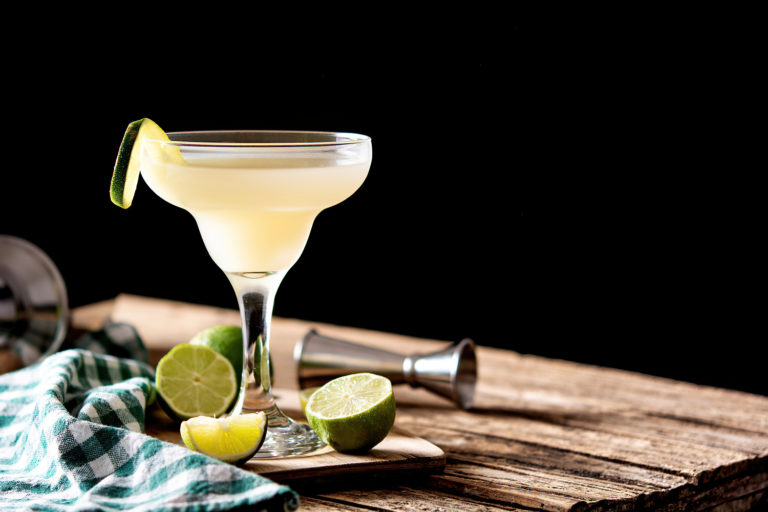The history of the daiquiri
As with many historical cocktails, the history of the Daiquiri’s origins cannot be traced beyond doubt. It is known that the short drink is an offshoot of the sours and originated in Cuba in the 19th century.
Already its name gives first information about its area of origin, because the cocktail got this from the village of the same name, which is to be found about 25 km east of Santiago de Cuba.
Many books say that the daiquiri was first served around 1900. In the meantime, however, this assumption is considered questionable, since rum*, cane sugar and limes were available much earlier and similar drinks had been known for some time.
In the 1920s, during the time of Prohibition, many U.S. citizens went to nearby Cuba to vacation and enjoy alcohol. This is where the triumph of the cocktail began, which experienced a real boom after the end of alcohol prohibition in the United States.
Today, the Daiquiri is one of the international classics among short drinks. The International Bartenders Association even includes it in its list of The Unforgettables, ennobling the cocktail as one of the fathers of modern cocktail culture.
The right rum for an original daiquiri
If you want to mix the original daiquiri cocktail, your main focus should be on the right rum.
Since the drink originated in Cuba, you should go primarily for Cuban rum. The most famous representative and excellent is Havana Club Añejo 3 Años. Personally, I like to use a Plantation 3 Stars as a substitute. Although this comes from Trinidad and Tobago, it makes a good figure in the drink.
The right rum will give your cocktail a unique flavor and help it stand out from the crowd. For this reason, it’s also worth wandering off the beaten path. Try a slightly aged rum to give your drink that special something.
Papá Doble – Hemingway’s favorite variation
Ernest Hemingway was not only one of the most famous and successful writers of his time, he was also not averse to alcohol. During his stay in Cuba he was a regular at the bar El Floridita where a bronze statue in honor of the late author can still be found today.
“My Mojito in La Bodeguita, my Daiquiri in El Floridita”.
Ernest Hemingway
Here he always ordered his own version of the drink, the Papá Doble. The Papá Doble Daiquiri is made with twice the amount of rum, omits the sugar syrup, and adds a shot of grapefruit juice to the classic to keep the cocktail in balance.
More variants
With nearly 100 years of history and enduring popularity, it’s no wonder that umpteen different variations of the daiquiri now exist.
Five of the most famous and popular descendants of the Cuban cocktail are:
- Hemingway Daiquiri / Papá Doble (see above)
- Double the rum, no or very little sugar and a dash of grapefruit juice
- Frozen Daiquiri
- Prepared with crushed ice in a blender and served with ice.
- Frozen strawberry daiquiri
- Fruity and refreshing summer version of Frozen Daiquiri prepared with frozen strawberries and/or strawberry syrup.
- Benjamin Barker Daiquiri
- Modern offshoot of the classic, which is prepared with dark rum, Campari* and absinthe.
- Basil Daiquiri
- The basic recipe is followed by shaking a few basil leaves in the shaker* and then strained into the glass.
